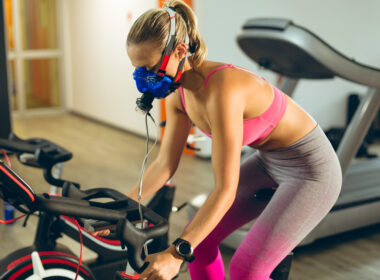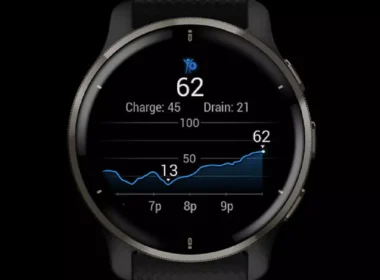Body composition definition is an important aspect of health and fitness discussions. It tells us how much of our body comprises fat and lean tissue, which can significantly impact overall health. More muscle and less fat can improve overall health and reduce the risk of chronic diseases. A higher percentage of lean tissue can also increase metabolism and help with weight management.
Understanding body composition is essential for athletes and fitness enthusiasts looking to optimize their performance. The compartment model is often used to describe body composition, which divides the body into two compartments: fat mass (FM) and fat-free mass (FFM). FM includes adipose tissue, while FFM includes bone, muscle, organs, and other non-fat tissues.
There are various methods available. These include skinfold thickness measurements, bioelectrical impedance analysis (BIA), dual-energy X-ray absorptiometry (DXA), air displacement plethysmography (ADP), and underwater weighing.
Table of Contents
What is Body Composition? Definition and Explanation
The Proportion of Fat, Muscle, Bone and Other Tissues
Body composition refers to the proportion of fat, muscle, bone, and other tissues that make up a person’s body. It is an important aspect of overall health and fitness. Understanding one’s body composition can help achieve a healthy body weight and reduce the risk of various diseases.
The Compartment Model
The compartment model is a common way to understand body composition. This model divides the body into fat and fat-free mass compartments. Fat mass includes all the adipose tissue in the body, while fat-free mass includes all non-fat tissues such as muscle, bone, and organs.
Importance of Each Component
Each component plays an important role in the human body. Fat provides energy storage for the body and helps regulate hormones. However, too much fat can lead to obesity and increase the risk of developing chronic diseases such as diabetes or heart disease.
The muscle is responsible for movement and posture control. It also helps regulate metabolism by burning calories even when at rest. Adequate muscle mass is essential for maintaining good health.
 Bone provides structural support for the body while protecting vital organs such as the brain and heart. Maintaining strong bones throughout life is crucial in preventing osteoporosis later on.
Bone provides structural support for the body while protecting vital organs such as the brain and heart. Maintaining strong bones throughout life is crucial in preventing osteoporosis later on.
Other components like water are also important for proper bodily function. The human body comprises approximately 60% water which helps regulate temperature, transport nutrients throughout the body, and remove waste products.
Understanding the Distinction: Lean Mass vs. Lean Muscle Mass
In body composition, “lean mass” and “lean muscle mass” may often be used interchangeably, but they hold different meanings.
Lean Mass is a collective term representing the combined weight of all non-fat elements in your body. It includes muscles but extends to bones, organs, blood, and bodily fluids. In essence, it’s the total weight of your body minus the total weight of all the fat it contains.
On the contrary, Lean Muscle Mass points explicitly to the weight of your skeletal muscles. These muscles are under your conscious control, enabling you to move your body. This term does not cover other components of lean mass, such as bones and organs.
Common Myths About Measuring Body Composition
Prevailing Myths About Measuring Body Composition
Body composition measurements are essential for understanding the amount of fat, muscle, and bone in our bodies. However, many myths surrounding body composition measurement can lead to confusion and misinformation.
Height Ratio Limitations
One common myth is that the height ratio accurately reflects body fat percentage. While height ratio may be a helpful tool for estimating body fatness in the general population, it may not be accurate for individuals with extreme heights or body types. For example, a very tall person may have a higher height ratio due to their long limbs and torso, even with low body fat percentages. On the other hand, a short person may have a lower height ratio but more body fat than someone taller.
Skinfold Thickness Limitations
Another limitation of body composition measurements is that skinfold thickness measurements can be limited by the skill and experience of the person performing the measurement. Skinfold thickness measurements involve pinching folds of skin at specific sites on the body and measuring their thickness with calipers. However, this method requires training and practice to ensure accurate results. If done incorrectly, skinfold thickness measurements can lead to inaccurate estimates of body fat percentages.
Fat-Free Mass Consideration
Additionally, free mass, such as bone and muscle, can affect body composition measurements and should be considered when interpreting results. Fat-free mass includes everything in your body except for fat mass: bones, organs, muscles, etcetera. Therefore, people with more muscle mass will generally have higher lean tissue weight, increasing their overall weight without necessarily increasing their total body fat percentage.
Understanding these limitations and tolerances is important when interpreting body composition measurements. These factors must be considered when evaluating an individual’s health status or progress toward fitness goals.
Limitations and Tolerances of Body Composition Measurements
Exploring the Accuracy and Limitations of Body Composition Measurements
Bioelectrical Impedance Analysis (BIA)
Bioelectrical Impedance Analysis (BIA) is a popular method used to estimate body composition. It passes a minor electrical current through the body and records the resistance. The rationale is that lean tissue, higher in water content, conducts electricity better than fat tissue, allowing BIA to estimate a person’s body fat percentage.
However, it’s essential to understand that BIA has potential inaccuracies due to various factors. For instance, hydration levels, recent food intake, skin temperature, and physical activity before the test can significantly influence the results.
![]()
Let’s consider two examples. A male with an actual body fat percentage of 15% could register a BIA result anywhere from 11.5% to 18.5% body fat, given a possible error range of +/- 3.5%. Similarly, a female with an actual body fat percentage of 35% could see BIA results ranging from 30% to 40% due to the same potential inaccuracies.
In a 2021 study, it was determined that smart scales are accurate for total body weight, but they should not be used routinely to assess body composition. Smart scales consistently underestimate body fat.
Therefore, the tolerance of this method needs to be carefully regarded. Despite its convenience and widespread use, BIA may not accurately represent body composition. It’s more appropriate to consider BIA as a tool for providing an estimation rather than a definitive measurement, with a known range of deviation that needs to be considered.
Dual-Energy X-ray Absorptiometry (DXA)
Dual-Energy X-ray Absorptiometry (DXA) is often regarded as the benchmark for body composition measurement. This approach utilizes X-rays of two distinct energy levels to assess bone density, lean tissue mass, and fat mass. DXA scans are notably precise and provide comprehensive data about bone health and body composition.
Despite this, it’s crucial to understand that DXA, like all measurement methods, has an inherent margin of error, albeit relatively small. To illustrate this, let’s revisit the examples of male and female individuals from the previous discussion.
A male with an actual body fat percentage of 15% might receive a DXA result that ranges roughly between 14% and 16%, assuming a possible error range of +/- 1%. Similarly, a female with an actual body fat percentage of 35% could have a DXA result anywhere between approximately 34% and 36%.
Despite its superior precision and comprehensive analysis, DXA is not exempt from potential inaccuracies. Therefore, it’s always important to interpret DXA results within the context of its known tolerance level, treating it as a highly accurate estimation rather than an absolute measurement.
Skin Calipers
Skin calipers represent a straightforward and cost-effective method to estimate body composition. This technique involves pinching and measuring skin folds at designated points on the body using calipers. The thickness of these skin folds is subsequently used to approximate body fat percentage.
However, it’s important to understand that skin caliper measurements also have a margin of error. For instance, let’s consider the same male and female subjects from our previous examples.
A male with an actual body fat percentage of 15% might see a caliper result that falls roughly between 13% and 17%, given a potential error range of +/- 2%. Similarly, a female with an actual body fat percentage of 35% could receive a caliper reading anywhere between approximately 33% and 37%.

While skin calipers offer a cost-effective and convenient option for estimating body fat, they are not without potential inaccuracies. Factors such as the skill of the person performing the measurement, the specific location of the skin folds, and even the individual’s hydration and recent exercise can influence the results. As such, skin caliper readings should be considered useful estimates that can be influenced by a known range of variance rather than definitive measurements.
Hydrostatic Weighing
Hydrostatic weighing, sometimes underwater weighing, is a highly precise method for estimating body composition. This technique requires the individual to be fully submerged in water, and their total body volume is calculated based on the amount of water displaced. This data is then used to determine their body density, which estimates their overall body composition.

However, like all measurement methods, hydrostatic weighing also has a margin of error. To illustrate, let’s use the same male and female subjects from our previous examples.
A male with an actual body fat percentage of 15% might receive a hydrostatic weighing result that ranges roughly between 14.5% and 15.5%, assuming a potential error range of +/- 1%. Similarly, a female with an actual body fat percentage of 35% could have a hydrostatic weighing result anywhere between approximately 34.5% and 35.5%.
While hydrostatic weighing is considered a highly accurate method, it is not immune to potential inaccuracies. Factors such as the individual’s lung capacity and comfort level in water can affect the results. Therefore, it’s always crucial to interpret the results within the context of their known tolerance level, treating it as a highly accurate estimation rather than an absolute measurement.
| Method | Tolerance | Considerations | Cost | Time |
|---|---|---|---|---|
| Bioelectrical Impedance Analysis (BIA) | +/- 3.5-5% | Depends on hydration, food intake, skin temperature, and recent physical activity. | Low | Quick |
| Dual-Energy X-ray Absorptiometry (DXA) | +/- 1% | Provides detailed breakdown including bone mineral content, fat mass, and lean tissue mass. | Medium-High | Moderate |
| Skin Calipers | +/- 2-3% | Varies with the skill of the person performing the measurement and the specific location of the skin folds. | Low | Quick |
| Hydrostatic Weighing | +/- 1% | Influenced by the individual’s lung capacity and comfort level in water. | High | Time-consuming |
The Impact of These Limitations on the Results and Interpretation
It’s important to understand the limitations of each body composition measurement method, as inaccurate results can lead to incorrect interpretation and potential health risks. For example, if an individual has a high bone density or water percentage, their true body fat percentage may be higher than measured through height ratio or skinfold thickness measurements.
When measuring body composition, it’s crucial to note that not all methods can directly measure lean muscle mass. While these methods, including Bioelectrical Impedance Analysis (BIA), Dual-Energy X-ray Absorptiometry (DXA), skin calipers, and hydrostatic weighing, can provide estimates of total lean mass, they are unable to differentiate between muscle and other non-fat components of the body.
DXA scans thoroughly break down body composition, including elements like bone mineral content, fat mass, and lean tissue mass. However, even DXA falls short of isolating skeletal muscle mass within the total lean tissue mass. More advanced imaging techniques, such as MRI or CT scans, are needed to measure lean muscle mass accurately. However, these techniques are not typically employed for routine body composition analysis due to high costs and complexity.
Does Body Composition Really Matter? – A Teaser for the Next Article
Overemphasizing the Importance of Body Composition
Body composition has become a buzzword in the fitness industry, with many people striving to achieve a certain body fat percentage or muscle mass. While it is important to maintain a healthy body composition, the emphasis on achieving a specific ratio may be overemphasized. There is no one-size-fits-all approach to body composition, as each individual’s needs and goals are unique.
While body composition is a valuable metric for understanding overall health and fitness, it’s crucial to recognize that it should not serve as a definitive proxy for performance. For instance, a male cyclist’s ideal body fat percentage may fall between 6-11% and 12-16% for women. However, achieving these body fat percentages does not automatically guarantee a podium finish or top-tier performance.
Performance in sports like cycling extends beyond body composition, involving multiple dimensions. A more pertinent performance metric is the power-to-weight ratio, or watts per kilogram (W/kg). This represents the power a cyclist can produce for each kilogram of body weight, directly correlating performance. A high W/kg ratio is critical for success in cycling, especially in climbing situations. While body composition is significant, it’s just one component of the broader athletic performance landscape.
Conclusion
Body composition is an important aspect of our overall health and well-being. It refers to the proportion of fat, muscle, bone, and other body tissues. Measuring body composition can help us understand our overall health status and identify areas for improvement.
There are several methods for measuring body composition, each with its strengths and limitations. Some standard techniques include skinfold measurements, bioelectrical impedance analysis (BIA), dual-energy X-ray absorptiometry (DXA), and underwater weighing.
While these methods can provide valuable information about our body composition, it’s important to remember that they are not perfect. Limitations and tolerances are associated with each technique, meaning that results may not always be accurate.
Despite these limitations, measuring body composition can still be a useful tool for monitoring our health over time. By understanding our body composition and making changes to improve it, we can reduce our risk of chronic diseases like heart disease and diabetes.
- Composition ID: Miller, Shannon. “What Makes a DEXA Scan Different?” Composition ID Blog. Published October 29, 2021. Accessed May 14, 2023. Available at: https://www.compositionid.com/blog/dexa/what-makes-a-dexa-scan-different/.
- Miller, Justine et al. “Accuracy of Smart Scales on Weight and Body Composition: Observational Study.” JMIR Mhealth Uhealth 9.4 (2021): e22487. Published online April 30, 2021. doi: 10.2196/22487. PMCID: PMC8122302. PMID: 33929337. Monitoring Editor: Gunther Eysenbach. Reviewed by John Rausch and Maryam Amini. Corresponding author: Justine Frija-Masson, MD, DPhil. Affiliations: 1: Department of Nephrology, AP-HP, Bichat Hospital, Paris, France. 2: INSERM U1151, Paris, France. 3: Faculty of Medicine, University of Paris, Paris, France. 4: Medical Intensive Care Unit, AP-HP, Tenon Hospital, Paris, France. 5: Sorbonne University, Paris, France. 6: DHU FIRE, Paris, France. 7: Assistance Publique-Hôpitaux de Paris, Paris, France. Available at: https://www.ncbi.nlm.nih.gov/pmc/articles/PMC8122302/
- InBody: “InBody.” InBody. Accessed May 14, 2023. Available at: https://www.inbody.co.kr/.
- InBody USA: “General.” InBody USA. Accessed May 14, 2023. Available at: https://www.inbodyusa.com/.
- Kirkendall, Donald T., John W. Grogan, and Richard G. Bowers. “Field Comparison of Body Composition Techniques: Hydrostatic Weighing, Skinfold Thickness, and Bioelectric Impedance.” Journal of Orthopaedic & Sports Physical Therapy 13, no. 5 (May 1, 1991): 235-239. Accessed May 14, 2023. Available at: https://www.jospt.org/doi/10.2519/jospt.1991.13.5.235.
- Lee, Seon Yeong, and Dympna Gallagher. “Assessment Methods in Human Body Composition.” Current Opinion in Clinical Nutrition and Metabolic Care 11, no. 5 (September 2008): 566-572. Accessed May 14, 2023. DOI: 10.1097/MCO.0b013e32830b5f23. Available at: https://journals.lww.com/co-clinicalnutrition/Abstract/2008/09000/Assessment_methods_in_human_body_composition.3.aspx.
- National Heart, Lung, and Blood Institute (NHLBI): “Guidelines on Obesity Management.” NHLBI. Accessed May 14, 2023. Available at: https://www.nhlbi.nih.gov/files/docs/guidelines/ob_gdlns.pdf.
- Study.com: “Body Mass Index.” Study.com. Accessed May 14, 2023. Available at: https://www.study.com/learn/lesson/bmi-formula-examples.html.
- Trifecta Nutrition: “Macro Friendly Tracking App.” Trifecta Nutrition. Accessed May 14, 2023. Available at: https://trifectanutrition.page.link/.
- Trifecta Nutrition: “Meal Plans – How Many Calories Should I Eat to Gain Weight?” Trifecta Nutrition. Accessed May 14, 2023. Available at: https://trifectanutrition.com/meal-plans?utm_source=blog&utm_medium=ad&utm_campaign=evergreen&utm_content=how-many-calories-should-i-eat-to-gain-weight.
- Wikimedia Commons: “Human Body Composition.” Wikimedia Commons. Accessed May 14, 2023. Available at: https://commons.wikimedia.org/. “`









